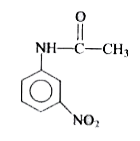OreCalcination−−−−−−→Residuedil.HNO3−−−−→aq. solution↓Zn dustMetal(M)+Zn2+(aq.)
above metallurgy is possible when ore is :-
ZnCO3
CaCO3.MgCO3
CuCO3.Cu(OH)2
PbS
The correct Answer is:C
To solve the problem, we need to identify the ore that, when subjected to calcination, produces a residue that can be treated with dilute nitric acid (HNO3) to yield a metal and zinc ions in solution. Let's break down the steps:
Step 1: Understanding Calcination
Calcination is a thermal treatment process where an ore is heated in the absence of air to remove volatile impurities. For carbonates, this typically results in the formation of metal oxides and the release of carbon dioxide.
Step 2: Analyzing the Options
We have the following options:
1. ZnCO3
2. CaCO3
3. MgCO3
4. PbS
Step 3: Performing Calcination on Each Ore
Let's analyze each option through calcination:
1. ZnCO3 (Zinc Carbonate):
- Upon calcination:
ZnCO3→ZnO+CO2↑
- Residue: ZnO
2. CaCO3 (Calcium Carbonate):
- Upon calcination:
CaCO3→CaO+CO2↑
- Residue: CaO
3. MgCO3 (Magnesium Carbonate):
- Upon calcination:
MgCO3→MgO+CO2↑
- Residue: MgO
4. PbS (Lead Sulfide):
- Upon calcination:
PbS+O2→PbO+SO2↑
- Residue: PbO
Step 4: Treating Residue with Dilute HNO3
Now, we need to see which of these residues can react with dilute HNO3 to form an aqueous solution containing a metal ion:
1. ZnO + HNO3:
- Produces:
ZnO+2HNO3→Zn(NO3)2+H2O
- Result: Aqueous Zn(NO3)2
2. CaO + HNO3:
- Produces:
CaO+2HNO3→Ca(NO3)2+H2O
- Result: Aqueous Ca(NO3)2
3. MgO + HNO3:
- Produces:
MgO+2HNO3→Mg(NO3)2+H2O
- Result: Aqueous Mg(NO3)2
4. PbO + HNO3:
- Produces:
PbO+2HNO3→Pb(NO3)2+H2O
- Result: Aqueous Pb(NO3)2
Step 5: Reaction with Zinc Dust
Next, we need to see which of these aqueous solutions can react with zinc dust to produce a metal:
- Zn(NO3)2: No reaction (zinc cannot displace itself).
- Ca(NO3)2: No reaction (calcium cannot be displaced).
- Mg(NO3)2: No reaction (magnesium cannot be displaced).
- Pb(NO3)2:
- Produces:
Pb(NO3)2+Zn→Pb+Zn(NO3)2
- Result: Produces lead metal.
Conclusion
The correct ore that satisfies all the conditions is PbS (Lead Sulfide), which upon calcination gives PbO, reacts with dilute HNO3 to form Pb(NO3)2, and finally, zinc dust displaces lead to form lead metal.
Final Answer
The ore is PbS.
Calcination is a thermal treatment process where an ore is heated in the absence of air to remove volatile impurities. For carbonates, this typically results in the formation of metal oxides and the release of carbon dioxide.
We have the following options:
1. ZnCO3
2. CaCO3
3. MgCO3
4. PbS
Let's analyze each option through calcination:
- Upon calcination:
ZnCO3→ZnO+CO2↑
- Residue: ZnO
- Upon calcination:
CaCO3→CaO+CO2↑
- Residue: CaO
- Upon calcination:
MgCO3→MgO+CO2↑
- Residue: MgO
- Upon calcination:
PbS+O2→PbO+SO2↑
- Residue: PbO
Now, we need to see which of these residues can react with dilute HNO3 to form an aqueous solution containing a metal ion:
- Produces:
ZnO+2HNO3→Zn(NO3)2+H2O
- Result: Aqueous Zn(NO3)2
- Produces:
CaO+2HNO3→Ca(NO3)2+H2O
- Result: Aqueous Ca(NO3)2
- Produces:
MgO+2HNO3→Mg(NO3)2+H2O
- Result: Aqueous Mg(NO3)2
- Produces:
PbO+2HNO3→Pb(NO3)2+H2O
- Result: Aqueous Pb(NO3)2
Next, we need to see which of these aqueous solutions can react with zinc dust to produce a metal:
- Ca(NO3)2: No reaction (calcium cannot be displaced).
- Mg(NO3)2: No reaction (magnesium cannot be displaced).
- Pb(NO3)2:
- Produces:
Pb(NO3)2+Zn→Pb+Zn(NO3)2
- Result: Produces lead metal.
The correct ore that satisfies all the conditions is PbS (Lead Sulfide), which upon calcination gives PbO, reacts with dilute HNO3 to form Pb(NO3)2, and finally, zinc dust displaces lead to form lead metal.
The ore is PbS.
Topper's Solved these Questions
Similar Questions
Knowledge Check
Phenol Zn-dust−−−→AConc.HNO3−−−−−−→+H2SO4BZn−−−→NaOHC
in the above reaction A, B and C are :Abezene,nitrobenzene and anilineBbenzene , dinitrobenzene and m-nitroanilineCbenzene, nitrobenzene and hydrazobenzeneDtoluene, m-nitrobenzene nd m-toludineConsider the following sequenceof reaction
C6H5NH2Ac2O−−→ΔAConc.HNO3−−−−−−→H2SO4B(Major)aq.H2SO4−−−−−→C(Major)
The major final product (C) is :A B
B C
C D
D
Ph−C∣BrH−CH2−C∣BrH2Zn−cu−−−→ΔProduct
Product of the above reaction is :APh−CH=CH−CH2−BrB CPH−CHBr−CH=CH2DPh−C=C−CH3
CPH−CHBr−CH=CH2DPh−C=C−CH3
But-2-ene 1.O3−−−−−−−→2.Zn,H2OPOHӨ−−−−−→ΔQPd/C−−−−−→H2R
R is :
View Solution(T)imparts violet colour to flameCompound (U)+conc. H2SO4−−−−−−−−−−−−−−−−−→(V)Red gasNaOH+AgNO3−−−−−−−−−→(W)Red ppt.NH3 soln.−−−−−−→(X)
(W)dil. KCl−−−→(Y) white ppt
(U)NaoH−−−→Δ(Z) gas (gives white fumes with HCl)
Identify (T) to (Z).
View SolutionH−≡−H(i)O3−−−−−−−−−−−→(ii)(H2O)/(Zn)(A)Zn/CH3COOH−−−−−−−−−→(B)
Compound (B):
View SolutionChoose the correct code by identifying (X), (Y) and (Z) in each case for the changes indicated:
(i) CrO2Cl2KOH−−→(X)conc. H2SO4−−−−−−−−→(Y)AgNO3−−−→(Z)
(ii) CrCl3(aq)excess−−−→NaOH(X)Na2O2−−−−−−→H2O, boil(Y)lead−−−→acetate(Z)
(iii) ZnSO4(aq)Na2CO3−−−−→(X)Δ−−→(Y)cobalt−−−−−−→nitrate, Δ(Z)
(iv) CuCl2(aq)NH4OH−−−−→H2S(X)HNO3−−−→Δ(Y)KCN−−→excess(Z)
View SolutionComplete the following reactions,
(i) H2(g)+MnO(s)Δ−−→Mn(s)+H2O(g)
(ii) CO(g)+H2(g)Δ−−−−→Catalyst
(iii) C3H8(g)+3H2O(g)Δ−−−−→Catalyst
(iv) Zn(s)+NaOH(aq)Heat−−→
After completing the above reactions in the balanced equations the coefficient for H2(g) may be
View Solution

